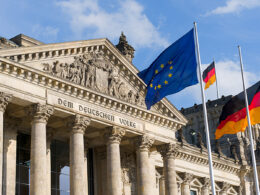The Norwegian government is considering building a fence along its border with Russia to improve the country's security situation, Yle reports.
The barrier is intended to help in case refugees flow to Norway from Russia. A similar situation occurred in the Scandinavian country in 2015 when 5,000 asylum seekers from Russia arrived on foot and by bicycle through Storskog, the only border crossing between Norway and Russia.
Norwegian Justice Minister Emilie Enger Mehl has stated that building a fence could be one way to improve security near the Russian border. A similar approach has been applied by Finland, which continues to construct barriers on its border with Russia.
Finland closed its borders with Russia due to the influx of migrants, primarily from the Middle East, who are attempting to cross the border and seek refuge in the country, which became a member of NATO in 2023. The Finnish officials said the Russian authorities were deliberately streaming migrants to Finland in an attempt to destabilize the country and the alliance.
In the recent claims, the Norwegian minister added that building fences is expensive, so the cost-effectiveness of such investments needs to be evaluated. Mehl also suggested that investing in drones to patrol the area and increasing the number of border guards at Storskog could be considered alternative solutions to maintain security at the border.
It is currently unclear whether the fence will be built along the Norwegian-Russian border or only on specific sections. The land border between Norway and Russia stretches for 200 kilometers.
Last year, Finland's Border Guard proposed building a wall along its border with Russia due to "recent changes in the security landscape." The project aims to make it more difficult for individuals to cross the border, UkrInform reports.
A three-meter-high steel mesh fence covering about 200 kilometers of the border's most critical sections was planned for completion by the end of 2026. The fence would also be equipped with surveillance equipment, and its estimated installation cost was approximately €380 million.
Related:





